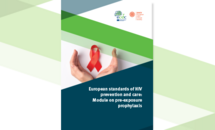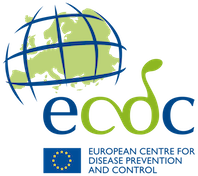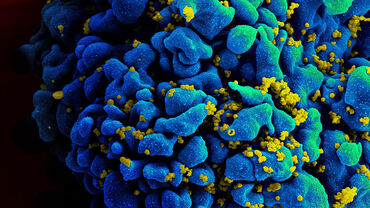European standards of HIV prevention and care: Module on pre-exposure prophylaxis
An estimated 2 334 662 people are living with HIV in Europe and Central Asia, 1 944 695 of whom (83%; range 65–100%) have been diagnosed. In 2023, 110 486 people were diagnosed with HIV in the WHO European the region. Of these new diagnoses, 54% were made at a late stage of infection (CD4 cell count < 350 cells/mm3 at the time of diagnosis), including 34% with advanced HIV infection (CD4 cell count < 200 cells/mm3). Early identification of recent HIV infection helps detect people during a period of increased transmissibility and reduces the risk of spread of onwards transmission.
Pre-exposure prophylaxis (PrEP) with antiretroviral medications is a highly effective tool in preventing new HIV infections. Roll-out of oral tenofovir disoproxil/emtricitabine (TDx/FTC) based PrEP effectively reduced incidence among key populations at substantial risk of HIV acquisition through sexual exposure, but wider scale implementation of PrEP is necessary to accelerate progress towards the UN sustainable development goal 3.3 of ending the AIDS epidemic by 2030.
Download

What are standards of care for HIV?
The standards of care (SoC) for HIV define the expected, or desired, quality of prevention, treatment, and care forpeople at risk of HIV acquisition or living with HIV.
The standards are based on a scientific rationale, as well as the responsibilities of each stakeholder and ensure that people receive appropriate, high-quality prevention and care that aligns with the most up-to-date medical knowledge and ethical standards.
The European Centre for Disease Prevention and Control (ECDC) in partnership with the European AIDS Clinical Society (EACS) have developed standards of care in the areas of HIV testing, pre-exposure prophylaxis (PrEP), antenatal screening, commencement of ART, and HIV and co-morbidities (add links to SoC modules). Each standard is based on the following structure:
1. Brief description of the rationale for the standard.
2. Quality statements describing best practice based on current guidelines, evidence, and expert opinion.
3. related measurable and auditable outcome indicators used to assess the quality and effectiveness of the services.
4. Numeric values for defined targets.
The standards are person-centred in their approach with a specific focus on being equitable, non-discriminatory, relevant, appropriate, and accessible for people at risk of or living with HIV.







